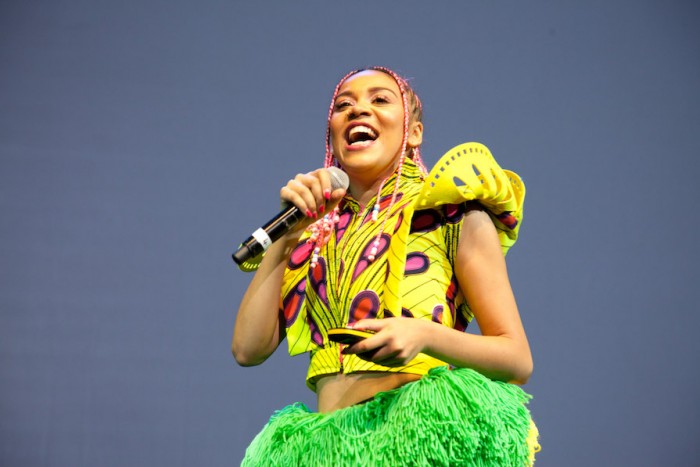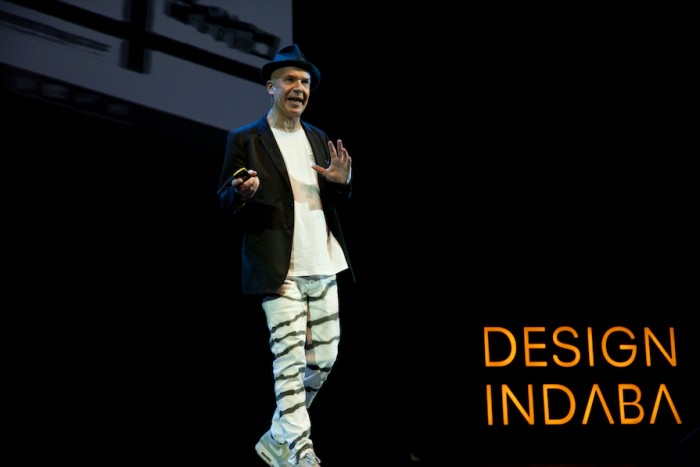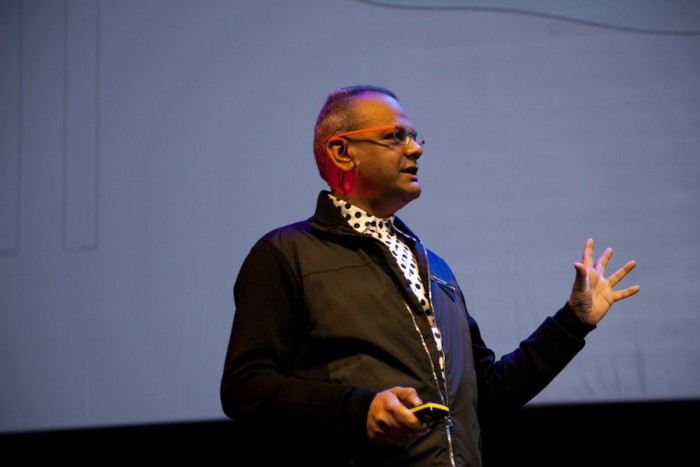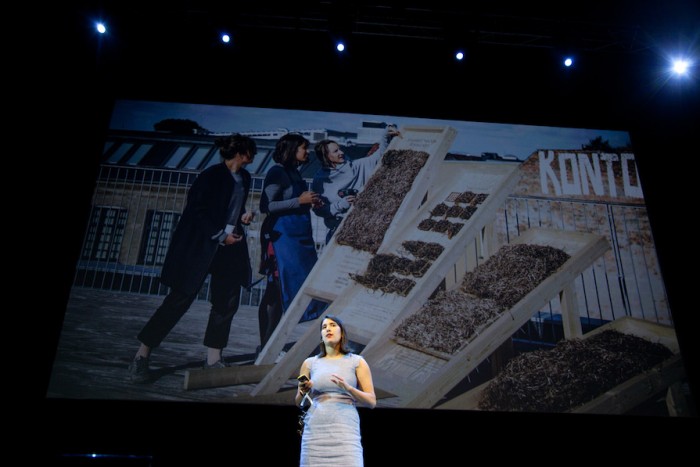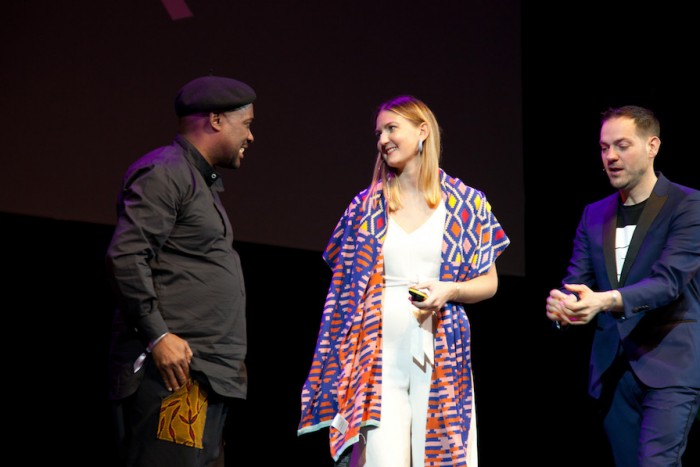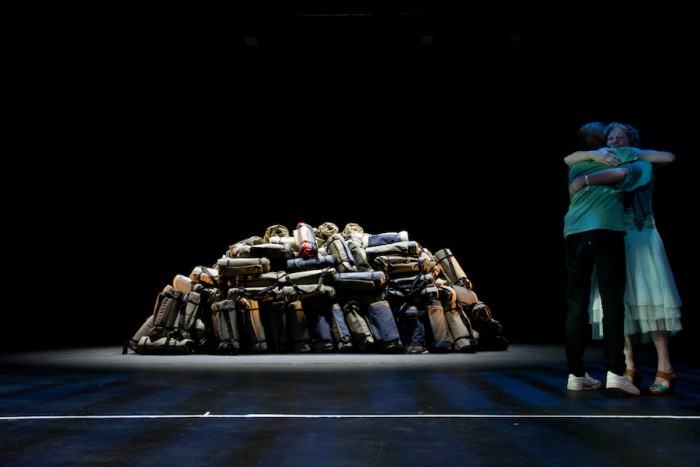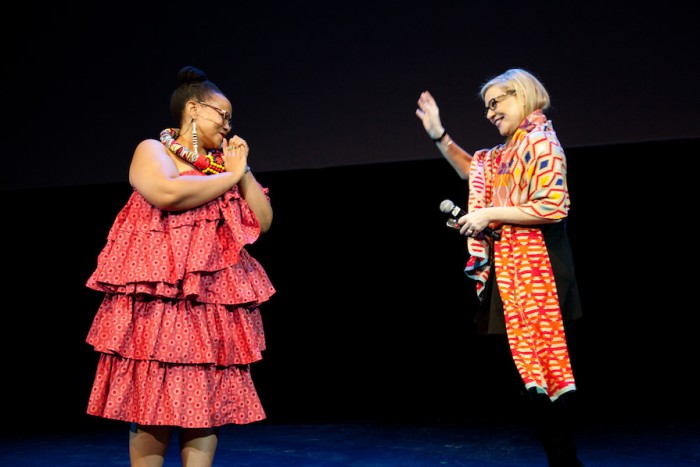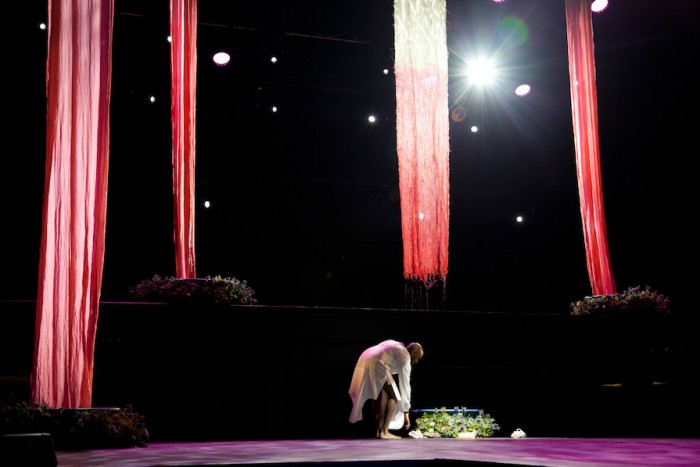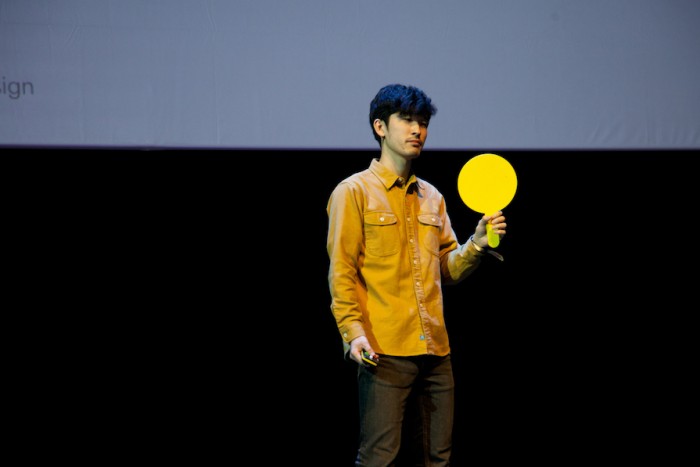Design has multiple roles – providing solutions to complex problems, inspiring, healing, connecting people, changing landscapes, changing behaviours – and nowhere did this become more apparent than on Day 1 of Design Indaba conference.
Before the speakers took to the stage, Sisa Ntshona, CEO of SA Tourism, announced the creation of a new ‘government department’ – The Department of Audacious Projects’ – and appointed Design Indaba’s Ravi Naidoo as Minister. Ntshona urged Design Indaba attendees to pitch their biggest, boldest, more audacious ideas to supercharge SA Tourism, with a prize of R50k for the best idea presented at the end of the conference. Design Indaba will match the idea with implementation, since we’re a Do Tank, not just a Think Tank.
After this inspiring start, Sho Madjozi opened the proceedings with her infectious energy. Song, music, dance and an impromptu fashion show had the crowd on their feet, and we learnt a lot about the history of xibelani, an integral part of Tsonga culture (for example, xibelani skirts are fantastically expensive and most women hope to own at least one in their life). Madjozi asserted that culture has to evolve and can’t be ‘museumfied’ – she proposed a xibelani carnival in Limpopo along the lines of the Rio Carnival, complete with extravagant innovation. She closed her presentation with her hit song John Cena and had everyone singing and dancing along.
Next on the programme was civil engineer Vukheta Mukhari, who introduced us to the wonders of biomicry. He pointed out that it was bacteria that taught him about the power of collaboration – he is part of a research team that has created the world’s first bio-bricks made of human urine. “Nature’s been building structures for far longer than humans,” he told the audience, adding that we should harness even waste products, as nature truly knows no waste.
Patrick Thomas followed, launching the beta version of Open Collab 2.0 in South Africa. Open Collab is a web-based tool that facilitates real-time collaboration between creatives. He rolled out the project at design schools last week, and the creative researchers helped to map South Africa from a design perspective.
Erudite and amusing structural engineer Hanif Kara was up next. As a structural engineer, he’s used to making structures stand up, but his inter-disciplinary approach sees him working with architects to create buildings that are not just structurally sound but also beautiful. “Technology is binary and has no soul. It doesn’t tell the truth or have moral responsibility. Tools are never innocent. But ethics and respect will inform the future,” he stated, adding that he is always on the lookout for beauty.
Up next was birthday girl Kathryn Larsen, who turns 25, just like Design Indaba. The bio-based designer explores how seaweed, eelgrass and algae can revolutionise the construction industry. “We need to learn from the past to create a better, greener future and start a dialogue about the future of the building industry.”
Antya Waegemann was up next. Her chief concern is that sexual assault survivors are not well served by existing structures, especially as ER doctors and nurses struggle to use existing rape kits. Her products and services aim to change this, particularly her rape kit ‘When No One Believes You’. To her mind, design can step in to make traumatic experiences less confusing and shameful. “Sexual violence is a problem of power, silence and fear – the world is beginning to see the magnitude of what is happening to women; some 60% of women in the world experience sexual violence in their lifetime, so we have to change our approach to this issue,” she said.
Bas Timmer’s heartwarming presentation saw him revealing 250 Sheltersuits for South Africans – the presentation was all the more touching because his mother flew out from Holland to see her son’s dream (in which she had a hand) become a reality. “Great design can make the world a little warmer,” he said, celebrating the seed-funding from Design Indaba that enabled him to take this philanthropic step in South Africa.
Debbie Millman’s almost evangelic presentation took us on a whistle-stop tour of branding, from rock art and symbols to logos and political activism. She asserted that brands are no longer existing to prop up late-era capitalism but to advocate for unity among people with shared ideals. She even engaged a choir singing in different languages to underscore her vision of a ‘common language’ of idealistic design.
Alexandra Genis amused the audience with the undeniably alien idea of artificial single-flavour molecules that look rather like Gummi Bears, but she did make a strong case for dealing with food shortages and getting away from transporting produce all over the world at great expense and at a cost to the planet.
Fashionista Sunny Dolat impressed with a presentation about how film and fashion helped him to come to terms with being a “queer black Indian in Kenya”. He asserted that clothing can be a way of saying “This is who I am today,” which cannot be wrong. “I was taught that beauty is not a frivolous thing, but something healing, spiritual and dignified. To be in the presence of beauty is to be in the presence of God,” he said.
Yosuke Ushigome of Takram spoke next, focusing on the humanisation of data. They demonstrated their RISAR prototype, which helps to personalise the effects of climate change through an augmented reality visualisation. Audience participation could either save or doom the planet – fortunately, the audience won and nobody drowned!
Finally, anti-Brexiteers Led By Donkeys gave the audience a hugely entertaining account of their increasingly audacious political campaign against the hypocritical politicians in favour of Brexit, finishing with crowd interaction – unfurling an enormous Union Jack with the hidden anti-Brexit message aimed at Nigel Farage, that they revealed at Farage’s celebratory Brexit party. Guerilla marketing at its finest, and a little bit of impromptu political theatre at #DI2020.

